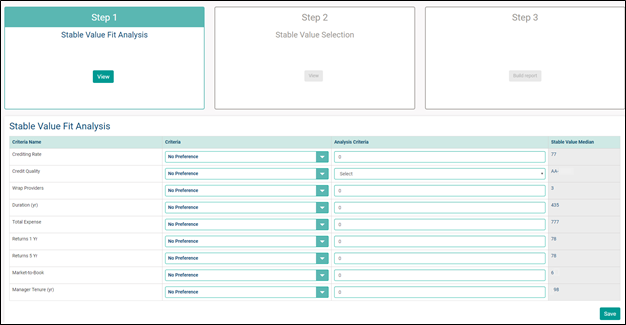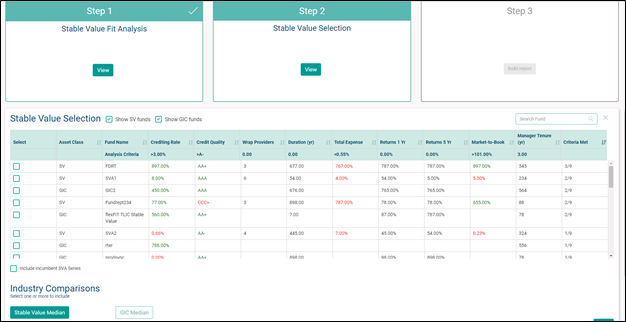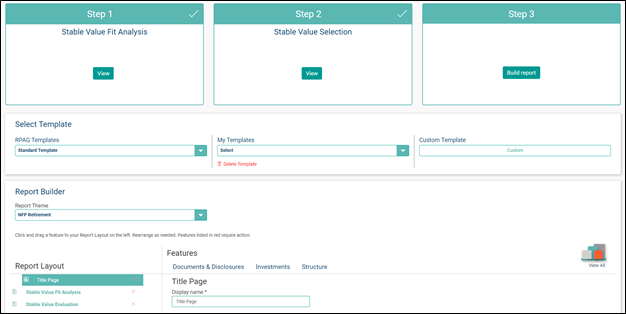Similar to money market funds, stable value funds typically invest in high-quality, short-term fixed income assets.
The book value of stable value funds are insured via wrap providers, allowing them to ensure principal preservation with the potential to earn a higher interest rate than money market funds. As a fiduciary, it is important to analyze the different aspects of a stable value fund rather than just mere returns.
Our Approach
- Assess client needs
- Determine available stable value fund lineup on platform
- Evaluate available funds using, but not limited to, the following criteria:
| Crediting Rate | The interest rate yield on the contract value ensures that an appropriate crediting rate is paid to investors for the amount of risk taken relative to other similar stable-value funds. |
| Market-Value-to-Book-Value Ratio | This ratio identifies whether the portfolio has a “gain” or “loss” based on the current value of securities compared to the price the securities were purchased at (i.e., book value). Ensure that the market-to-book ratio is appropriate for the level of risk taken in the portfolio relative to other similar stable-value funds. Everything else being equal, a higher ratio indicates a greater financial health of the underlying assets. |
| Average Credit Quality Rating of Portfolio | Ensure the portfolio is investing in high-rated securities to protect it from capital loss. |
| Insurance/Wrap Provisions | Guarantors ensure that funds remain “benefit responsive” so participants can rebalance and redeem at book value. Diversification among providers can be beneficial; however, single-issuer structures sometimes have greater flexibility when negotiating contract terms. Contract terms that determine liquidity, such as “put” provisions or “market value, adjustments” at the plan level are important considerations. |
| Asset Allocation | Ensure that funds are diversified across various asset classes to ensure the portfolio will not be overly affected by underperformance in one sector. |
| Size of Fund | Ensure the fund is large enough to handle sizeable inflows and outflows without materially affecting the crediting rate. Smaller pooled funds may have performance advantages over larger funds, but with potentially higher levels of risk. |
| Manager Tenure | Experience and length of track record are also important. |



